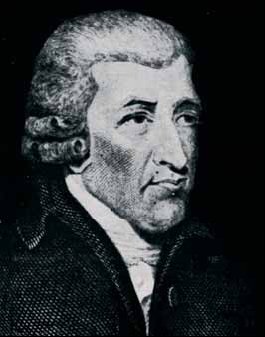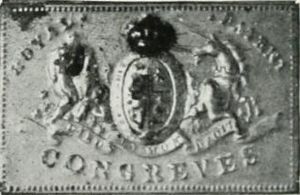John Walker (inventor) facts for kids
John Walker (born May 29, 1781 – died May 1, 1859) was an English inventor. He is famous for inventing the friction match. This was a big step in making fire easier to create.
Contents
Early Life and Career
John Walker was born in 1781 in Stockton-on-Tees, a town in County Durham, England. He went to the local grammar school. After school, he started training to become a surgeon's assistant.
However, John didn't like surgical operations. So, he decided to change his career path. He became interested in chemistry instead. He studied chemistry in Durham and York. Around 1818, he opened his own small business. It was a shop where he worked as a chemist and druggist in Stockton.
John Walker passed away in Stockton on May 1, 1859. He was buried in the church grounds of St Mary's Church in Norton, which is close to Stockton.
How John Walker Invented the Match
John Walker was very interested in finding an easy way to make fire. People already knew about some chemical mixtures that could explode and create a flame. But it was hard to get that flame to light something that burned slowly, like wood.
One day, while John was mixing chemicals for a lighting mixture, something amazing happened. A wooden stick he had dipped in the mixture accidentally rubbed against his fireplace. Suddenly, it caught fire! He immediately realized how useful this discovery could be.
He quickly started making these new "friction matches." They were made from small wooden splints or cardboard sticks. These were coated with sulphur and then tipped with a special mixture. This mixture included antimony sulphide, chlorate of potash, and gum. The sulphur helped the flame from the tip spread to the wood of the stick.
Selling and Sharing His Invention
A box of 50 of John Walker's matches cost one shilling. Each box also came with a piece of sandpaper. You had to fold the sandpaper in half and pull the match through it to make it light up.
Sometimes, people mistakenly thought John named his matches "Congreves." This name was actually for matches invented by Charles Sauria, a French chemistry student. John Walker never shared the exact recipe for his matches.
About two and a half years after John's invention became known, another inventor named Isaac Holden came up with a similar idea. He also coated wooden splinters with sulphur. However, John Walker had already sold many matches before Holden's discovery. His sales book shows he made his first match sale on April 7, 1827.
John Walker was already quite comfortable financially. He chose not to patent his invention. Even famous scientists like Michael Faraday encouraged him to do so. But John wanted his invention to be free for anyone to make. Because of this, he didn't become famous or wealthy from his matches. He was able to retire some years later. People only gave him full credit for his invention after he died.
Later Match Developments
After John Walker's invention, other chemists continued to improve matches. In 1830, a French chemist named Charles Sauria created the first phosphorus-based match. He replaced the antimony sulfide in Walker's matches with white phosphorus.
Later, in 1836, matches were first patented in the United States. These new matches were smaller and safer to use. However, white phosphorus was later banned because it was poisonous. Today's modern safety matches were created by the Swedish chemist, Gustaf Erik Pasch.



